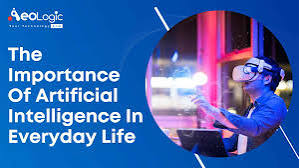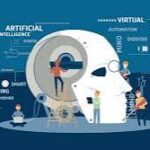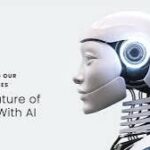The Rise of Artificial Intelligence in Everyday Life: Opportunities and Challenges

Artificial Intelligence (AI) has become an integral part of our everyday lives, revolutionizing the way we work, communicate, and interact with technology. What was once a futuristic concept is now embedded in countless tools and services, from virtual assistants like Siri and Alexa to personalized recommendations on Netflix and Amazon. However, while AI brings unparalleled opportunities, it also poses challenges that require careful consideration.
This article explores the rise of AI in everyday life, its impact, and the opportunities and challenges it presents.
“Beat the Pressure: A Comprehensive Guide to Lowering Blood Pressure Naturally.”
Buy book from Gumroad or Paystack
Understanding Artificial Intelligence
Artificial Intelligence refers to computer systems designed to perform tasks that traditionally require human intelligence. These tasks include learning, reasoning, problem-solving, and understanding language. Machine learning, a subset of AI, enables systems to learn and improve from experience without being explicitly programmed.
AI systems are categorized into two types:
- Narrow AI: Designed to perform specific tasks, such as facial recognition or spam filtering.
- General AI: A theoretical concept where machines can perform any intellectual task that a human can.
Currently, we are in the era of Narrow AI, which powers many applications in our daily lives.
AI in Everyday Life
AI has seamlessly integrated into many aspects of modern life, offering convenience and efficiency. Here are some ways it impacts our daily routines:
1. Smart Devices and Virtual Assistants
Virtual assistants like Alexa, Google Assistant, and Siri use AI to process voice commands, answer questions, control smart home devices, and more. These systems rely on natural language processing (NLP) to understand and respond to human speech.
2. Personalized Recommendations
AI algorithms analyze user behavior to provide personalized recommendations on platforms like Netflix, YouTube, and Spotify. This personalization enhances user experience and keeps people engaged for longer periods.
3. Healthcare Innovations
In healthcare, AI is used for early disease detection, treatment recommendations, and even robotic surgeries. For example, AI-powered tools can analyze medical imaging to identify abnormalities with high accuracy.
4. Autonomous Vehicles
Self-driving cars, such as those developed by Tesla, rely on AI to navigate roads, interpret traffic signs, and ensure passenger safety. These vehicles have the potential to reduce traffic accidents caused by human error.
5. E-commerce and Retail
AI powers chatbots, inventory management systems, and dynamic pricing in e-commerce. For instance, AI-driven chatbots provide instant customer support, improving the overall shopping experience.
6. Education and E-Learning
AI is transforming education through adaptive learning platforms that cater to individual student needs. Tools like Duolingo use AI to track progress and adjust lessons based on a learner’s performance.
Opportunities of Artificial Intelligence
The widespread adoption of AI presents numerous benefits across industries and for individuals:
1. Increased Efficiency
AI automates repetitive tasks, allowing humans to focus on more complex and creative activities. For example, in offices, AI tools streamline workflows, improve data analysis, and save time.
2. Improved Decision-Making
AI systems can analyze vast amounts of data quickly, providing valuable insights for better decision-making. Businesses, healthcare providers, and governments use AI to make data-driven decisions.
3. Accessibility and Inclusivity
AI-powered tools like speech-to-text systems and visual aids empower individuals with disabilities. For instance, AI-powered hearing aids and screen readers improve accessibility for people with hearing or visual impairments.
4. Economic Growth and Innovation
AI fuels innovation by enabling the creation of new products, services, and industries. It contributes to economic growth by driving advancements in technology and productivity.
5. Enhanced Customer Experience
Through personalization and instant responses, AI improves customer satisfaction in various sectors, from retail to hospitality.
Challenges of Artificial Intelligence
Despite its many benefits, the rise of AI also brings significant challenges:
1. Privacy Concerns
AI systems often require access to large amounts of personal data, raising concerns about data privacy and security. For example, the algorithms that recommend products or services may inadvertently expose sensitive information.
2. Bias and Fairness
AI algorithms can perpetuate biases present in the data they are trained on. This has led to instances of discrimination in hiring processes, facial recognition, and other applications.
3. Job Displacement
The automation of tasks through AI threatens jobs in various industries, particularly those involving repetitive or manual work. While AI creates new opportunities, it also requires reskilling the workforce to adapt to changing demands.
4. Ethical Dilemmas
The use of AI in decision-making, such as in law enforcement or healthcare, raises ethical questions. For example, who is responsible if an AI system makes a harmful decision?
5. Security Risks
AI systems can be vulnerable to hacking or malicious use. Deepfake technology, for example, can create convincing fake videos, posing risks to individuals and organizations.
Balancing Opportunities and Challenges
To maximize the benefits of AI while addressing its challenges, a balanced approach is essential. Here are some key strategies:
1. Regulation and Policy Development
Governments and organizations must establish clear policies to ensure the ethical use of AI. These policies should address data privacy, bias, and accountability.
2. Transparency and Explainability
AI systems should be transparent, with clear explanations of how decisions are made. This builds trust and helps users understand the technology.
3. Education and Reskilling
Investing in education and reskilling programs will prepare the workforce for an AI-driven economy. Emphasis should be placed on developing skills in AI-related fields.
4. Collaboration Between Stakeholders
Collaboration among governments, businesses, and researchers is crucial for addressing the global challenges of AI. Joint efforts can ensure that AI is developed and deployed responsibly.
The Future of AI in Everyday Life
The future of AI holds immense potential. As technology advances, we can expect AI to play an even greater role in areas such as personalized medicine, climate change solutions, and advanced robotics. However, with great power comes great responsibility. Ensuring that AI serves humanity positively will require ongoing vigilance, innovation, and ethical commitment.
Final Thoughts
The rise of artificial intelligence in everyday life is a double-edged sword. On one hand, it offers transformative opportunities that improve efficiency, convenience, and quality of life. On the other hand, it presents challenges that demand thoughtful solutions to protect privacy, ensure fairness, and promote ethical use.
As individuals and as a society, we must approach AI with curiosity, caution, and a willingness to adapt. By doing so, we can harness its potential for good while mitigating its risks, creating a future where AI benefits everyone.
💔 “She said she loved me. And for fifty-two years, I believed her.” 💔
Buy The Book "The Longest Lie: A Husband’s Journey Through Love, Betrayal, and Redemption" From Gumroad






